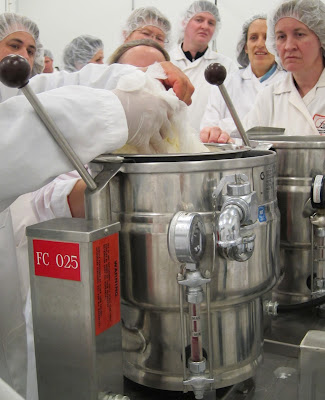Flavourful Saskatoon, February 17, 2020
Local Happenings
The Saskatoon Heritage Society’s annual luncheon is at 12 pm, Mar. 15, at the Sheraton Cavalier. The guest speaker, Elizabeth A. Scott, curator at the Western Development Museum, will share stories of life in Saskatchewan told through the clothes we wore.
Sparrow Coffee Shop, the sister to City Perks, is starting to be open. Like them on Facebook to find out when you can drop by. I’m looking forward to browsing the book collection later in the spring.
Two Saskatoon coffee shops are on the list of the 50 best coffee shops in Canada – City Perks and Collective Coffee. 33 1/3 Coffee Roasters in Regina also makes the list.
A new company with Saskatoon links aims to replace plastic with natural materials that will quickly decompose in backyard compost. Cogomelo’s “products are made from mycelium-based composites, where we use a substrate – in our case, agricultural waste – that is partially replaced as the fungal biomass grows and consumes it.” Their first product is a lint roller. You can help by participating in the company’s crowdfunding campaign.
Marc Loiselle and his family have been growing heritage Red Fife wheat since 2001. Marc says, “Red Fife is more difficult to grow agronomically, but it has that great taste and Slow Food story behind it.” To try it out for yourself, head over to Night Oven Bakery, where the Loiselle’s Red Fife, Musketeer Fall Rye, and Rouge de Bordeaux wheat are stone-ground and milled on site.
I’m looking forward to reading about more Saskatchewan products and producers in Jenn Sharp’s book, Flat Out Delicious: Your Definitive Guide to Saskatchewan’s Food Artisans due to be released on April 14.
Crowdfarming
An orange farm near Valencia, Spain, is marketing its fruit online, direct to consumers. They are also inviting consumers to adopt a tree. “A customer (or ‘crowdfarmer’ as they are called), commits to buying an annual subscription for a tree’s upkeep. . . . A young tree takes time to establish itself. In fact, it takes up to five years for a tree to produce a full quota of 80 kilos of fruit. So, while new crowdfarmers anticipate their trees reaching maturity, the farm makes up any fruit shortfall from their own mature orchard.”
Chilis & Mexican Cookbooks
The University of Texas at San Antonia library has collected over 2,000 Mexican cookbooks, the earliest dating from 1789: “This so-called ‘manuscript cookbook’—written by ‘Doña Ignacita,’ who Noell believes was the kitchen manager of a well-off family—is a handwritten recipe collection in a notebook, complete with liquid stains, doodles, and pages that naturally fall open to the most-loved recipes.” Over 50 of the cookbooks are now available online.
A British journalist recommends growing your own chilis, pointing out that there are hundreds of varieties. If gardening isn’t your thing, don’t despair. You can get a wide range of peppers ranging from mild to hot to really, really hot from Grandora Gardens at the Saskatoon Farmers’ Market Co-operative (they also sell dried chili powder). The author says “I love Padrón peppers from northwest Spain, whose small, green fruit have a wonderful mineral bitterness.” The good news is that Padrón peppers are grown by Kaleidoscope Vegetable Gardens, also at the SFMC.
Flavourful Saskatoon is a weekly Monday feature. I also post articles about food that is good, clean and fair; travel; and books. You may also enjoy EcoFriendly Sask profiling Saskatchewan nature/environmental initiatives and events.
You can follow Wanderlust and Words on Facebook, Twitter, or by email (top right corner).







Comments